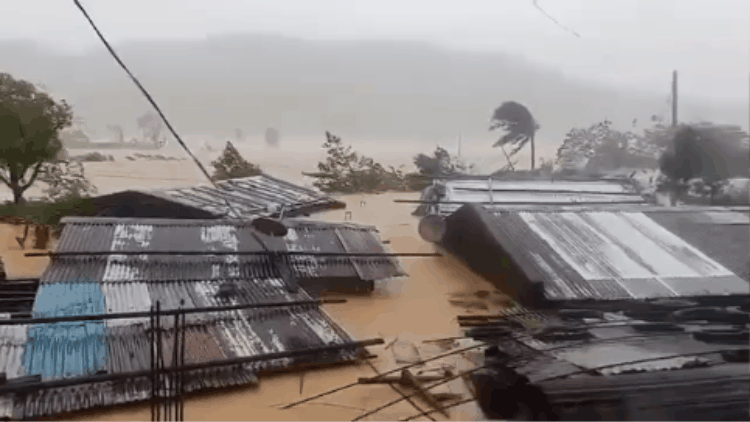Super typhoon Fung-wong made landfall on the northeastern coast of the Philippines on Sunday evening, where the previous major typhoon killed at least two people and forced more than a million people to evacuate areas prone to flash floods and landslides, according to local officials.
The storm made landfall in Dinalungan town, Aurora province, after causing heavy rain and strong winds all day in the northeastern provinces of the Philippines from offshore. The sustained wind speed was up to 185 km/h and gusts of up to 230 km/h.
The rain and winds were so strong that it was almost impossible to see anything, according to one witness.
Super Typhoon Fung-wong, the strongest storm threatening the Philippines this year, began devastating the Northeast coastal area before making landfall. The storm comes as the Philippines is still facing heavy damage from Typhoon Kalmaegi, which has killed at least 204 people.

Super typhoon Fung-wong is the biggest typhoon to threaten the Philippines in years, with a 1,800 km wide wind range that could cover two-thirds of the island nation's territory.
The storm entered the Pacific Ocean as the Philippines had not yet overcome the consequences of Typhoon Kalmaegi, which claimed at least 224 lives in the central provinces on Tuesday before heading towards Vietnam, where at least five people were killed and more than 2,600 homes were damaged.
Philippine President Ferdinand Marcos Jr. has declared a state of emergency due to the severe devastation caused by Typhoon Kalmaegi and the expected disaster caused by Fung-wong - also known as Uwan in the Philippines.
More than a million people have been evacuated from high-risk villages in the Northeast, including the Bicol region - which is vulnerable to typhoons from the Pacific Ocean and mud from Mayon, one of the country's most active volcanoes.
Authorities in the northern provinces, which are at risk of being directly or incidentally affected by Fung-wong, have given students a day off and closed most state agencies on Monday and Tuesday.
As of the end of the weekend and into Monday, November 10, at least 325 domestic flights and 61 international flights have been canceled.
More than 6,600 passengers and transport staff were stranded at seaports because the Coast Guard banned ships from leaving the port due to rough seas.
Currently, Typhoon Fung-wong does not directly affect the weather in mainland Vietnam.
According to the latest storm forecast from the National Center for Hydro-Meteorological Forecasting, the sea area east of the North East Sea will have strong winds of level 6-7, then increase to level 82; the area near the storm's eye will have strong winds of level 11-13, gusts of level 16, waves 4.0-6.0m high, then increase to 6.0 8.0 8.0m, the area near the storm's eye will have 8.0-10.0m. The sea is rough.
People and tourists should note that all boats operating in the above-mentioned dangerous areas are likely to be affected by thunderstorms, whirlwinds, strong winds, and large waves.






